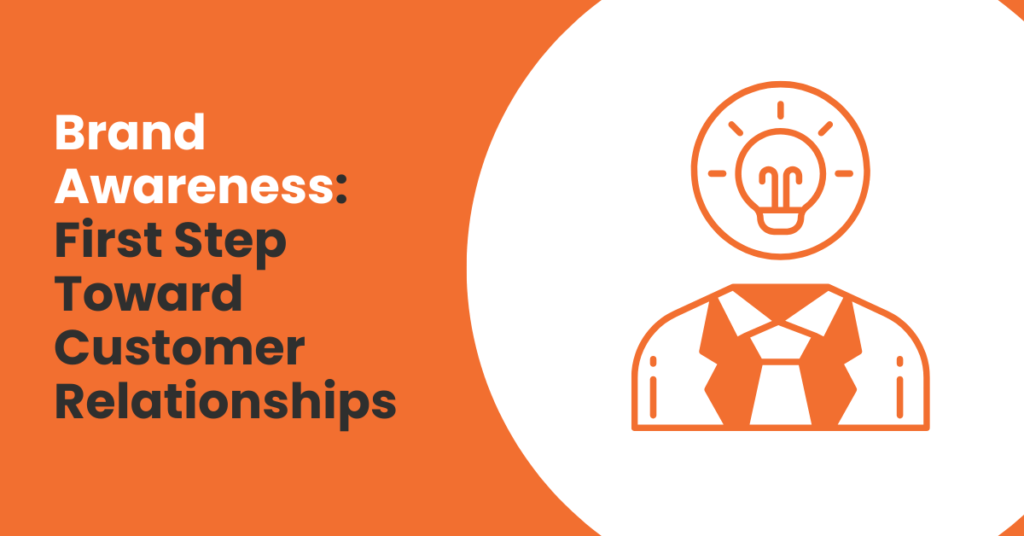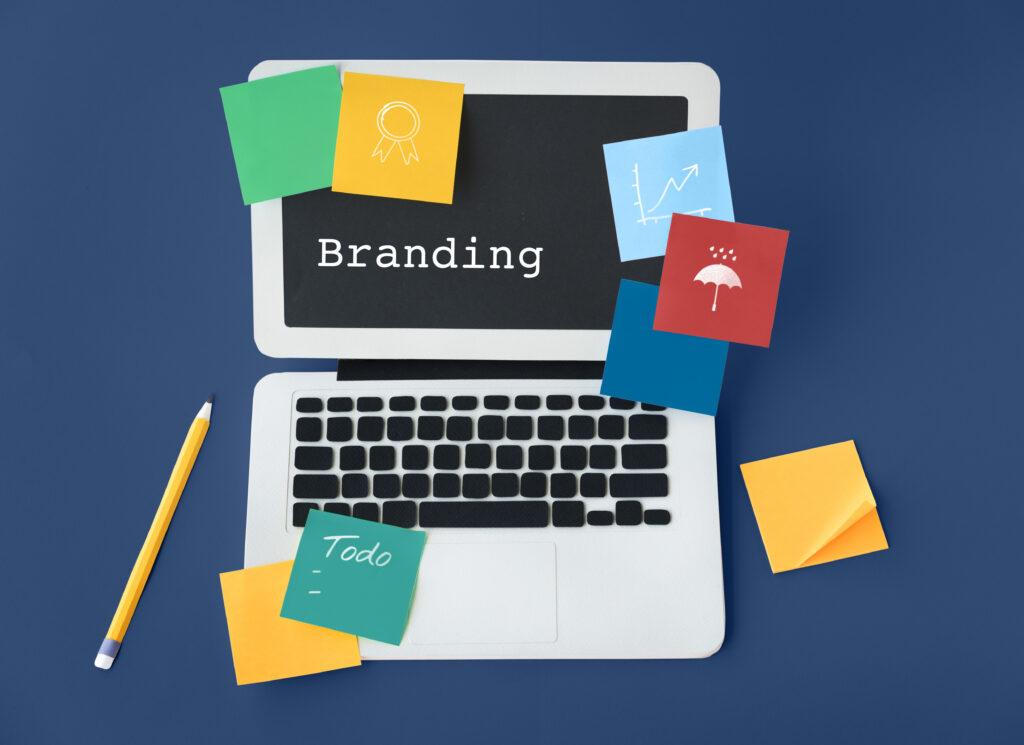Brand Awareness: First Step Toward Customer Relationships

In today’s marketing landscape, brand awareness has become the make-or-break factor that separates thriving businesses from those struggling to stay afloat. Consider these realities:
- You’re competing with thousands of brands for increasingly shorter attention spans
- Customers encounter 6,000-10,000 marketing messages daily across all channels
- 59% of consumers prefer to buy from brands they’re familiar with
- Brand awareness can increase revenue by up to 23% according to recent studies
The digital world has created both opportunities and challenges for building awareness. On one hand, you have more channels than ever to reach potential customers. On the other hand, you’re competing with thousands of other brands for the same attention span that’s getting shorter every year.
Speaking of digital world, integrated marketing like social media platform can help to create seamless brand experience, which is very helpful to empower your brand in branding.
Here’s what many businesses get wrong:
They think awareness is just about getting their name out there. But real brand awareness goes much deeper than recognition. It’s about creating meaningful associations in people’s minds. The companies that understand this difference are building:
- Sustainable customer relationships that drive long-term growth
- Brand loyalty that withstands competitive pressure
- Word-of-mouth marketing that reduces acquisition costs
- Premium pricing power through perceived value
- Reduced marketing costs over time due to organic recognition
Now, we will digging deeper on brand awareness in this article.
Also read: 5 Digital Marketing Strategy For Your Startup To Start Now

Why Brand Awareness Matters
Brand awareness isn’t just a vanity metric that looks good in reports. It’s the foundation that makes every other marketing effort more effective. When people are familiar with your brand, several key advantages emerge:
– They’re naturally more receptive to your advertising
– They’re more likely to click on your content and engage with your posts
– They’re more willing to give you a chance when they’re ready to buy
– They require fewer touchpoints before making a purchase decision
– They’re more likely to become repeat customers and brand advocates
The Psychology Behind Awareness
There’s a psychological principle called the “mere exposure effect” that explains why awareness is so powerful. The more familiar people become with something, the more they tend to like it. This means that simply being present in your audience’s world—consistently and authentically—builds positive associations over time.
Not only awareness psychology, we also cover The Psychology Behind High-Converting Landing Pages that can help you complete the setup for your brand with the right target and goals.
When customers recognize your brand, several things happen automatically:
- They perceive less risk in choosing you because familiarity feels safer than the unknown
- They’re more likely to remember you during the decision-making process because your brand is already stored in their memory
- They’re more inclined to recommend you to others because suggesting a known brand feels more confident than endorsing something obscure
Also read: 10 Free SEO Tools to Improve Your Digital Marketing Faster

The Competitive Advantage of Top-of-Mind Awareness
Think about the last time you needed to solve a problem quickly. The first solutions that came to mind were likely brands you were already aware of. This “top-of-mind” awareness is incredibly valuable because it:
- Puts your brand in the consideration set before customers start researching
- Reduces the need for expensive awareness advertising later
- Creates a competitive moat that’s difficult for competitors to overcome
- Generates more qualified leads since people already have positive associations
- Increases conversion rates across all marketing channels
While your competitors are fighting for attention during the research phase, you’re already being considered as a viable solution.
Building Trust Through Consistent Presence
Awareness also builds trust in subtle but important ways. When people see your brand consistently across different contexts, it creates several trust signals:
- Stability impression
Brands that appear regularly seem more established and reliable - Authority positioning
Consistent presence suggests expertise and industry leadership - Social proof
Seeing your brand everywhere implies others trust and choose you - Reduced risk perception
Familiar brands feel safer than unknown alternatives - Professional credibility
Consistent branding suggests attention to detail and quality
Also read: Unleashing the Power of Click Marketing As PPC, CPC, and CTR

Key Strategies to Build Brand Awareness
Content Marketing That Actually Adds Value
The most effective awareness-building content doesn’t feel like marketing at all. Instead of focusing on your products or services, create content that genuinely helps your audience solve problems or learn something new. Read here to find tips to find and create a viral content.
This approach builds awareness while establishing your brand as a helpful resource rather than just another company trying to sell something.
Successful content marketing for awareness requires consistency and patience. You’re not trying to drive immediate conversions—you’re building a relationship over time. This approach includes:
- Publishing weekly blog posts that answer common questions in your industry
- Creating video tutorials that teach valuable skills
- Sharing insights about trends that affect your audience
- Developing downloadable resources that provide genuine value
HubSpot exemplifies this approach perfectly. They built massive brand awareness by giving away marketing education and tools for free. When businesses needed marketing software, HubSpot was already top-of-mind because they had been helpful long before they tried to sell anything.
Social Media That Builds Genuine Connections
Social media awareness isn’t about posting promotional content and hoping for the best. It’s about participating in conversations, sharing perspectives, and showing the human side of your brand. Effective social media awareness strategies include:
- Engaging authentically with your audience’s content
- Sharing behind-the-scenes glimpses of your company culture
- Taking positions on topics that matter to your customers
- Being consistent with your brand voice and visual identity
The key is finding the balance between being professional and being personable. Your audience should feel like they’re getting to know a brand with personality and values, not just a corporate entity trying to sell them something.
Also read: How to Convert Clicks to Customers? Guide to Optimizing Landing Pages

Strategic Paid Advertising for Reach
Organic content is essential for building awareness, but paid advertising can accelerate the process significantly. The key is using paid channels strategically rather than just boosting posts and hoping for results.
But if you can afford advertising, we have the tips fon how to launch Facebook Ads Campaign without wasting budget that might useful for you.
For awareness campaigns, focus on reach and frequency rather than immediate conversions. You want to get your brand in front of as many relevant people as possible, multiple times, to build familiarity. Effective paid awareness strategies include:
– Running Facebook or Instagram campaigns optimized for impressions
– Using Google Display ads to appear on websites your audience visits
– Sponsoring content on platforms where your customers spend time
– Creating video ads for YouTube or social media platforms
The messaging for awareness advertising should be different from conversion-focused ads. Instead of trying to drive immediate action, focus on introducing your brand, highlighting what makes you different, or showcasing your values. The goal is to plant a seed in people’s minds that will grow over time.
Partnerships That Expand Your Reach
Collaborating with other brands, influencers, or industry leaders can dramatically expand your awareness beyond your existing audience. Effective partnership strategies include:
- Complementary brand collaborations with businesses serving the same audience
- Industry influencer partnerships that lend credibility and reach new followers
- Content co-creation that provides value while exposing both brands
- Cross-promotional campaigns that benefit all parties involved
- Event partnerships that create memorable shared experiences
- Affiliate relationships that incentivize others to promote your brand
The key is choosing partnerships that feel natural and provide value to all parties involved, including the audience. The best partnerships feel less like advertising and more like valuable collaborations that happen to expose both brands to new audiences.
You can also consider the topic and copy that qualified SEO friendly content, so your content will be very much likely findable.
Consistency Across Every Touchpoint
One of the biggest awareness killers is inconsistency. When your brand looks, sounds, or feels different across various channels, you’re essentially starting from scratch with awareness building every time someone encounters you in a new place. Essential consistency elements include:
- Visual identity: Colors, fonts, logos, and imagery that remain uniform across all platforms
- Brand voice and tone: Personality that comes through in all communications
- Core messaging: Value propositions that appear consistently everywhere
- Content themes: Topics and approaches that align with your brand expertise
- Customer experience: Service quality and interaction standards that match expectations
- Values demonstration: Consistent behavior that reinforces what your brand stands for
This consistency helps people recognize your brand instantly, regardless of where they encounter it. Over time, this recognition becomes automatic—people will know it’s your content before they even see your logo.
Also read: Thriving the Digital Marketing Landscape: Trends and Tactics

Measuring Brand Awareness Effectively
Digital Metrics That Matter
Measuring awareness requires looking beyond traditional conversion metrics to understand how your brand presence is growing:
- Social media engagement rates show how well your content resonates with your audience
- Increases in branded search volume indicate that more people are actively looking for your company
- Growth in direct website traffic suggests that people are remembering your brand and visiting intentionally
- Mention tracking reveals how often people talk about your brand online
- Share rates demonstrate how compelling your content is to your audience
The Power of Share of Voice
Share of voice measures how much of the conversation in your industry belongs to your brand compared to competitors. This can be tracked through social media mentions, search volume, or even traditional media coverage. Growing share of voice indicates that your brand is becoming more prominent in your industry’s landscape.
Surveys and Brand Recognition Studies
Sometimes the most valuable awareness data comes from simply asking people. Regular surveys of your target audience can reveal whether they recognize your brand, what they associate it with, and how you compare to competitors in terms of top-of-mind awareness.
These surveys don’t need to be expensive or complex. Simple online polls or social media questions can provide insights into how your awareness efforts are performing and where you might need to adjust your strategy.

Common Awareness Building Mistakes
Trying to Be Everything to Everyone
One of the biggest mistakes in awareness building is trying to appeal to too broad an audience. When you try to be everything to everyone, you end up being memorable to no one.
The most effective awareness strategies focus on being very relevant and interesting to a specific audience rather than somewhat relevant to everyone.
Inconsistent Messaging and Presence
Sporadic efforts don’t build awareness—consistency does. Brands that post heavily for a few weeks and then disappear for months struggle to build the familiarity that drives awareness. It’s better to maintain a steady, sustainable presence than to have bursts of activity followed by long periods of silence.
Focusing Only on Follower Count
Many businesses get caught up in vanity metrics like follower count or reach numbers without considering whether they’re reaching the right people. Quality of awareness matters more than quantity. It’s better to have strong awareness among 1,000 potential customers than weak awareness among 10,000 people who will never buy from you.
Also read: Best 5 Proven Digital Marketing Strategies

Building Long-Term Awareness Success
Creating a Sustainable Content System
Sustainable awareness building requires systems rather than sporadic efforts. Essential components of a sustainable system include:
- Content calendars that plan your messaging across different channels and time periods
- Regular publishing schedules that your audience can rely on and expect
- Content creation processes that maintain quality without burning out your team
- Brand guidelines that ensure consistency across all content creators
- Performance tracking systems to measure what’s working and what isn’t
Adapting to Platform Changes
The digital landscape changes constantly, and awareness strategies need to evolve with it. What works on social media today might not work next year. Successful brands stay flexible and experiment with new channels and approaches while maintaining their core brand identity.
Measuring Long-Term Impact
Awareness building is a long-term investment, and its impact should be measured accordingly. While you should track monthly and quarterly metrics, the real value of awareness efforts often becomes clear over years rather than weeks.
Also read: 4 Impactful Tips to Kickstart your Digital Marketing Career

Your Awareness Action Plan
Building brand awareness doesn’t happen overnight, but it doesn’t require a massive budget either. Start by defining what you want to be known for, then consistently communicate that message across all your marketing channels. Focus on being helpful, authentic, and memorable rather than just promotional.
The brands that succeed in building lasting awareness are those that understand it’s not about being the loudest voice in the room—it’s about being the most consistent, valuable, and trustworthy presence in your customers’ lives.
Remember, every interaction with your brand either builds or diminishes awareness. Make each one count by staying true to your brand identity while providing genuine value to your audience.
Over time, this approach builds not just awareness, but the kind of customer relationships that drive sustainable business growth.
Also read: The Small Business Guide to Lead Generation That Works

